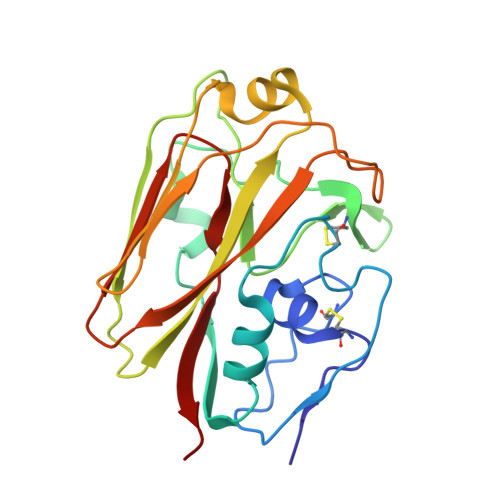Structural vaccinology: structure-based design of influenza A virus hemagglutinin subtype-specific subunit vaccines
Xuan, C.L., Shi, Y., Qi, J.X., Zhang, W., Xiao, H.X., Gao, G.F.(2011) Protein Cell 2: 997-1005
- PubMed: 22231357
- DOI: https://doi.org/10.1007/s13238-011-1134-y
- Primary Citation of Related Structures:
3UYW, 3UYX - PubMed Abstract:
There is a great need for new vaccine development against influenza A viruses due to the drawbacks of traditional vaccines that are mainly prepared using embryonated eggs. The main component of the current split influenza A virus vaccine is viral hemagglutinin (HA) which induces a strong antibody-mediated immune response. To develop a modern vaccine against influenza A viruses, the current research has been focused on the universal vaccines targeting viral M2, NP and HA proteins. Crystallographic studies have shown that HA forms a trimer embedded on the viral envelope surface, and each monomer consists of a globular head (HA1) and a "rod-like" stalk region (HA2), the latter being more conserved among different HA subtypes and being the primary target for universal vaccines. In this study, we rationally designed the HA head based on the crystal structure of the 2009-pandemic influenza A (H1N1) virus HA as a model, tested its immunogenicity in mice, solved its crystal structure and further examined its immunological characteristics. The results show that the HA globular head can be easily prepared by in vitro refolding in an E. coli expression system, which maintains its intact structure and allows for the stimulation of a strong immune response. Together with recent reports on some similar HA globular head preparations we conclude that structure-based rational design of the HA globular head can be used for subtype-specific vaccines against influenza viruses.
Organizational Affiliation:
CAS Key Laboratory of Pathogenic Microbiology and Immunology, Institute of Microbiology, Chinese Academy of Sciences, Beijing, 100101, China.















